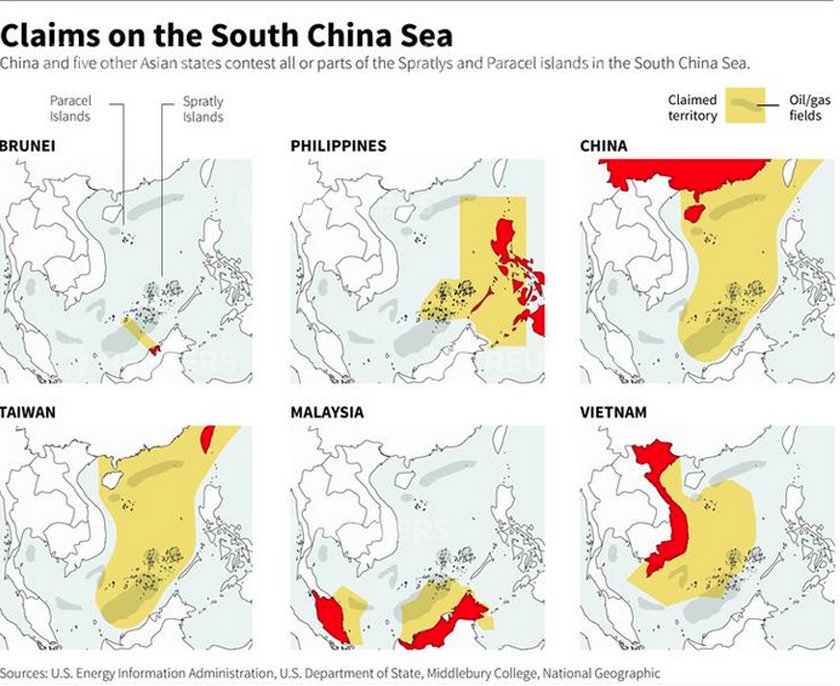China has lashed out at reports that the Pentagon may consider sending military aircraft and ships to the South China Sea, but opinions differ in the U.S. over what role America should play in the murky dispute.
Defense Secretary Ash Carter reportedly is requesting options that include sending Navy vessels and aircraft within 12 nautical miles of coral reefs that China has been building up in the disputed Spratly Islands.
The aim would be to ensure navigational freedom in a region where several Southeast Asian countries are jockeying for position.
“We are severely concerned about relevant remarks made by the American side,” China’s Foreign Ministry spokeswoman Hua Chunying said Wednesday, even though no decision had been made by the U.S.
Based on a study of recent satellite images, China appears to be building up artificial islands by expanding seven existing reefs in the Spratly Islands. That effort, ongoing since March 2014, has added about 2,000 acres of land. China also is believed to be constructing a military-sized airstrip on one of the artificial islands.
“China should build common ground through diplomacy in the region, not artificial grounds through dredging in the South China Sea,” Daniel R. Russel, U.S. assistant secretary of state for East Asian and Pacific affairs, said at a Senate Foreign Relations Committee hearing Wednesday in Washington.
The Philippines has taken the dispute to the United Nations. But over the years, that has amounted to little more than a war of words, with the sides accusing each other of illegal occupation and disregard for the international Law of the Sea and the Code of Conduct for the South China Sea.
Aside from backing Japan’s claim of the disputed Senkaku Islands, the U.S. has taken no position on the sovereignty claims in the South China Sea, but American officials face increasing pressure to get more involved.
But some foreign relations committee lawmakers want immediate U.S. action to help stabilize the situation.
The State Department’s Russel said China already has reacted to pressure by pulling back on construction of oil drilling rigs and falling silent on plans to establish an Air Defense Identification Zone in the South China Sea.
“We have prevented the situation from boiling over,” Russel said. “If the Chinese strategy was to freeze us out, it’s not only not working, it has backfired. We’re giving the smaller countries the confidence to push back. We’re giving them the capabilities to defend their own territory and their interests.”
Assistant Defense Secretary for Asian and Pacific Security Affairs David B. Shear would not confirm a report in the Wall Street Journal that the U.S. intends to consider the option of sending air and naval support to the region. He said the Defense Department will keep working to help the Philippines and other allies in the region hold their own in the dispute.
But Carter reportedly also wants options that include dispatching U.S. ships and planes to patrol near the region.
Shear told lawmakers that the U.S. has already provided millions of dollars to help modernize the forces of its Asian-Pacific allies, including Japan, Australia and the Philippines, but added that America also wants to avoid any unintentional confrontation with China.
Beijing and Washington have been warning each other to refrain from taking provocative actions.
Hua Chunying, the Chinese Foreign Ministry spokeswoman, said Wednesday in Beijing: “We always uphold the freedom of navigation in the South China Sea. But the freedom of navigation definitely does not mean the military vessel or aircraft of a foreign country can willfully enter the territorial waters or airspace of another country.”
China has yet to physically seize territory of other countries. Russel expects the ongoing dispute will come up during Secretary of State John Kerry’s visit to Beijing early next week and also in Chinese President Xi Jinping’s visit to Washington in September.


